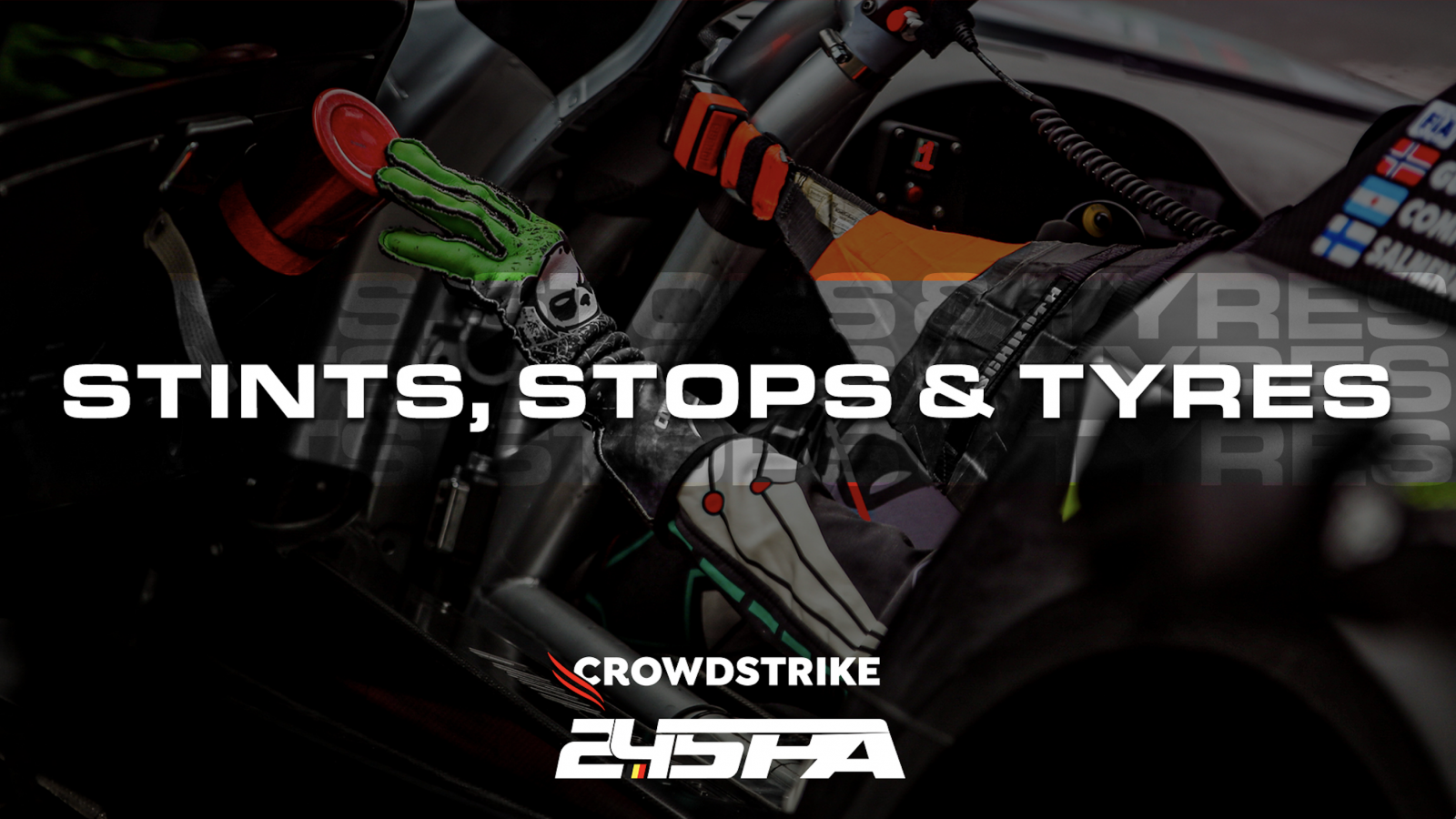During the race, you will often hear commentators talk about a stint. Put simply, this is the continuous time that a car spends on-track: the clock begins upon leaving the pits and is reset when the car returns. The maximum stint length at Spa is 65 minutes, unless a full-course yellow or safety car period is in operation when the stint finishes. In this case, an additional five minutes is allowed to return to the pits at a slower speed.
Pit stops are crucial in endurance racing and there will be hundreds performed throughout the 24 Hours. For standard stops, there is a minimum refuelling time during which the car must remain connected to the rig. Tyre and driver changes can take place during refuelling, but they are optional. A one-second tolerance on pit stop time is permitted on four occasions during the course of the race.
Short refuelling stops are also allowed. For these, a maximum refuelling time will be determined and can differ between brands. As such, some cars may need to complete a ‘stop and hold’ to ensure that they are stationary for the same amount of time. There is no tolerance on short pit stops, so it is essential that teams get them right.
Additionally, each car must perform a technical pit stop, lasting at least four minutes from pit-in to pit-out. This is to allow teams to change items such as brake pads, a task that can be performed much quicker on some cars than others. The technical pit stop can be taken at any point between the start of the 12th hour and end of the 22nd hour, including during a full-course yellow or safety car.
Speaking of safety cars, a new rule introduced for this year could prove very significant. When the safety car is on-track and the race has been neutralised, any cars running ahead of their class leader in the line will be allowed to overtake and join the back of the field. This will effectively give them a lap back, perhaps allowing a route back into contention.
As for tyres, sole supplier Pirelli will provide each car with a maximum of 30 sets of its dry compound, which must be used from free practice onwards. Two sets from the official test day can be carried over as part of the 30-set allocation, while an additional set is authorised for the cars taking part in Super Pole. These can’t be used during the race, so there's no excuse not to push them to the absolute limit.
Of course, we know just how big a part the weather can play at Spa. Rain is a possibility and can shape the outcome of the race, though the 2022 edition was highly unusual in that not a drop fell during the entire 24 Hours! In any case, there is no limit on the use of Pirelli's wet compound tyre, ensuring that all cars can be on the correct rubber for the conditions.

